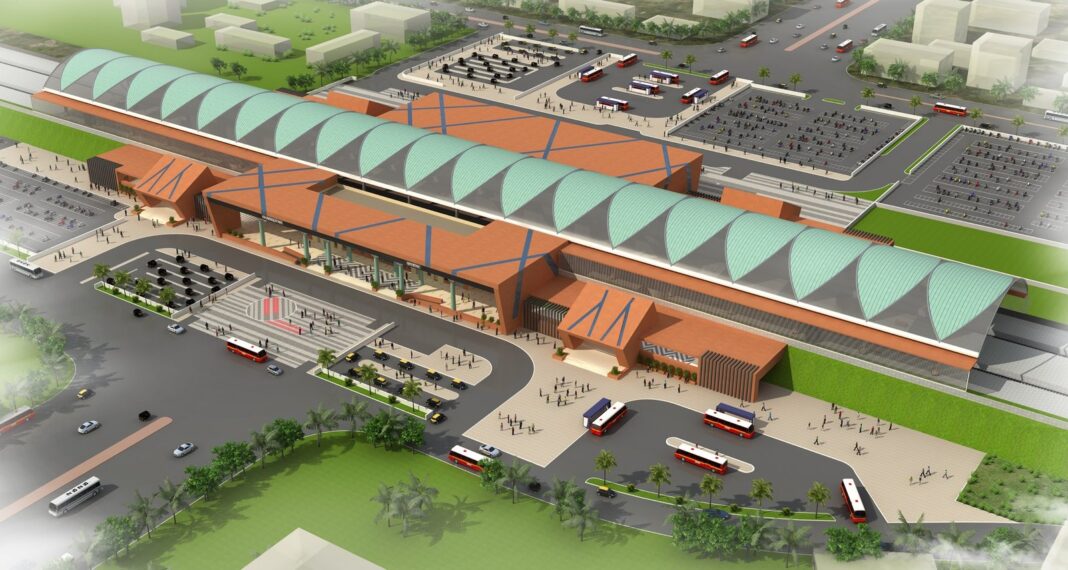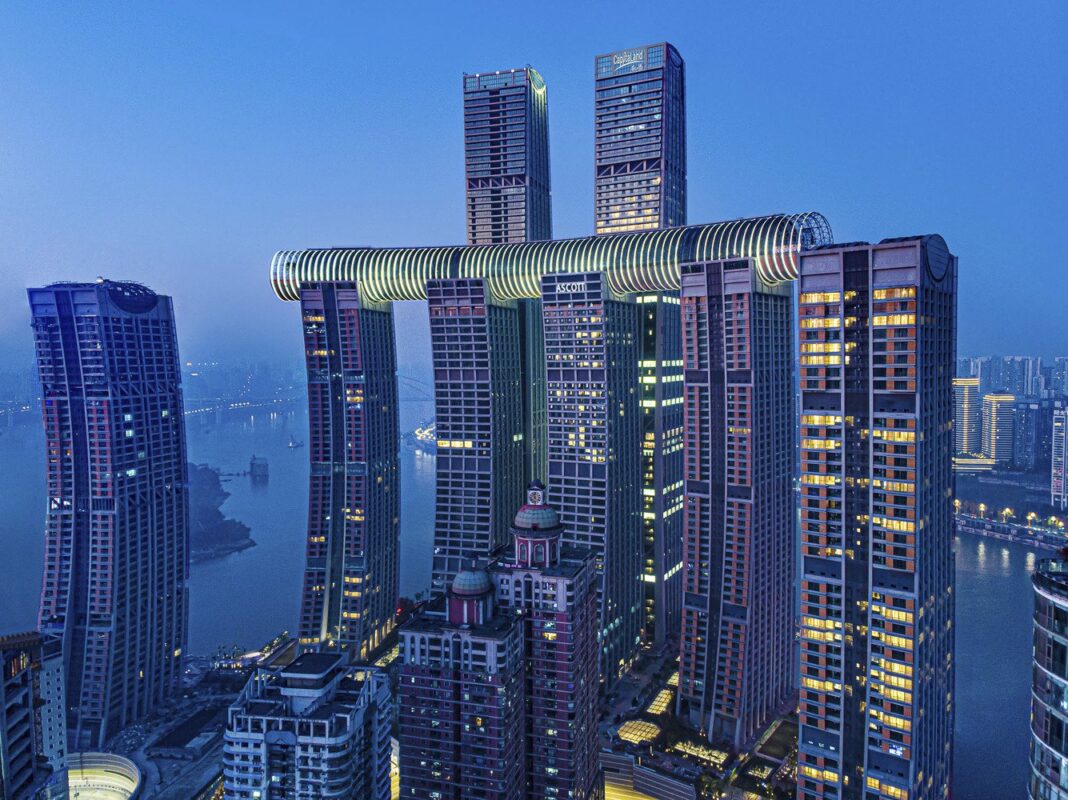
The Musée Atelier’s spiral-shaped pavilion, designed by BIG and realised by the Swiss architecture office CCHE, seamlessly rises on walls of structural curved glass. A feat of engineering and design, it is the first construction of its kind to be built at such altitude. The curved glazing entirely supports the steel roof, while a brass mesh runs along the external surface to regulate light and temperature. The green roof further helps regulate temperature, while absorbing water.
In the light-filled new building, ATELIER BRÜCKNER has incorporated a rhythmically flowing route through the exhibition. It starts in the historic building and, going in a clockwise direction, slopes gently down into the heart of the spiral, after which it rises again on the contrary direction – filled with energy like the springs of a watch. Visitors experience the route as a flowing continuum with a composed narration. Each chapter has its own design language and is introduced by an interlude, a mechanical sculpture, or an artistically designed display item. The showcases are positioned within the architecture precisely.
At the centre of the architecture and the exhibition, there is a single watch that has an incredible 21 complications: the “Universelle” is the most complicated watch that Audemars Piguet has ever created. It is presented in a glass sphere, whereby the front and rear are shown as equally valuable views. Eight other watches with Grande Complications are placed around the “Universelle”. The design is reminiscent of a solar system with planets rotating around a sun on their orbits. After all, astronomic cycles are what determine the essence of watchmaking.
The spiral has been designed to perfectly integrate the surrounding landscape. The floors follow different slants to adapt to the natural gradient of the land and provide the basis of the museum’s inner layout stretched into a linear continuous spatial experience. Inside, the curved glass walls converge clockwise towards the spiral’s centre, before moving in the opposite direction: visitors travel through the building as they would through the spring of a timepiece.









